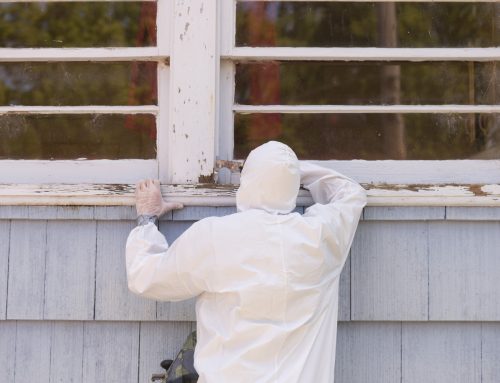
Did you know that homes built before 1978 are likely to contain lead paint? Lead paint is a health hazard for everyone, but it can especially hurt children, with those who are one or two years old being the most at risk.
If you suspect your home may have lead paint, what can you do about it? The best thing to do is to turn to lead abatement experts.
Read on to learn what the lead abatement process is like and what you can expect.
What Is Lead Abatement?
Lead abatement refers to the process of reducing the levels of lead in a home. Lead abatement contractors work to eliminate as much of the hazard as possible, with many successfully removing all signs of lead from the house.
The federal government as well as state governments have their own regulations and laws regarding lead paint. The Environmental Protection Agency has to be notified about all lead abatement activities and the EPA requires all companies that engage in these abatement activities to have the right licenses.
Lead paint abatement requires a particular set of skills that most contractors do not have, which is why the contractors you hire for the abatement have to have lead abatement certification and licenses. They have to know the best techniques for the removal of lead paint and they have to take all precautions to avoid placing themselves and others in danger.
Paint that contains lead was popular throughout the 1950s and for the next two decades, until 1978 when the government banned its use.
Lead paint dries faster and does not retain moisture, allowing it to remain looking its best over time. The most common colors that people used for their homes were lead chromate (chrome yellow), lead oxide (red lead), and lead carbonate (white lead).
Although lead is a natural metal that you can find in water, air, and soil, it is highly toxic. If the pain remains in good condition, the danger is minimal, but the surface of lead paint does tend to crack over time. This releases dust full of lead particular that you can inhale.
How Lead Abatement Works
The first thing that your contractor has to do before the process of lead abatement can begin is to notify the EPA. The EPA asks for a detailed description of how the abatement will happen.
It is best to send this notification at least 5 days before the work begins, but if there is immediate danger to the homeowners, such as high lead levels in their blood, the notification can happen on the day when the project starts.
In this notification, the lead abatement contractors will write the date they plan on starting the abatement as well as the date they plan to finish. They have to include all of the information on their company, including certification, the type of structure where the abatement will happen, total square feet, and a description of the abatement strategies they plan to take.
To be able to perform any kind of lead abatement procedures, contractors must wear protective clothing that fits under government regulation. At a minimum, the outfit should include disposable coveralls, gloves, shoe covers, goggles, and a respirator.
Methods
There are a few different methods the contractor will consider for your home. Enclosure is one of the easiest options, especially if the area that has lead is large. With an enclosure, the contractor will cover the lead paint with another wall covering.
If there is a window, door, or molding that contains lead paint, then replacement is a good option. They will remove the item and replace it with a new one.
Another method is paint removal. Pain removal means there will be a lot of dust in the air as the process progresses, so only a professional should undertake it.
The other option the contractor will consider is encapsulation. Encapsulation covers the affected area and then seals it with a special coating that does not allow the paint to crack.
Do You Suspect There Is Lead Paint in Your Home?
If your home was built in the 1950s, there is a high chance it contains lead paint. If it is a house from before 1978, there is also a good chance you will find lead paint.
You want to get a paint inspection, where professionals will take samples from all painted surfaces in your home to see how much lead it contains. This step will not tell you how dangerous the paint is, which is why you want to follow it up with a risk assessment. A risk assessment will tell you if the paint and lead dust will be dangerous for you and your family.
If your home does test positive for lead and there is danger for everyone in it, you want to take action immediately by reaching out to professionals. As you wait for them to begin their abatement processes, you can do a few things to keep your loved ones safe:
- Keep children and pets away from the peeling paint and other surfaces that contain lead
- Make barriers between living areas and lead sources
- Wash hands and toys in a regular manner
- Wipe down windows with a wet cloth
- Mop floors
By minimizing the contact the family has with the lead source, you are lowering the risks of disturbing the paint and creating more dust. This is why it is crucial to have a clear idea of where the dangers lie.
Hire the Best
If you suspect your home has lead paint, you need to turn to lead abatement experts like us at Pro Services. With over 25 years of experience keeping families safe from lead, mold, and asbestos, we know we can offer the help you need.
Request our services today!

